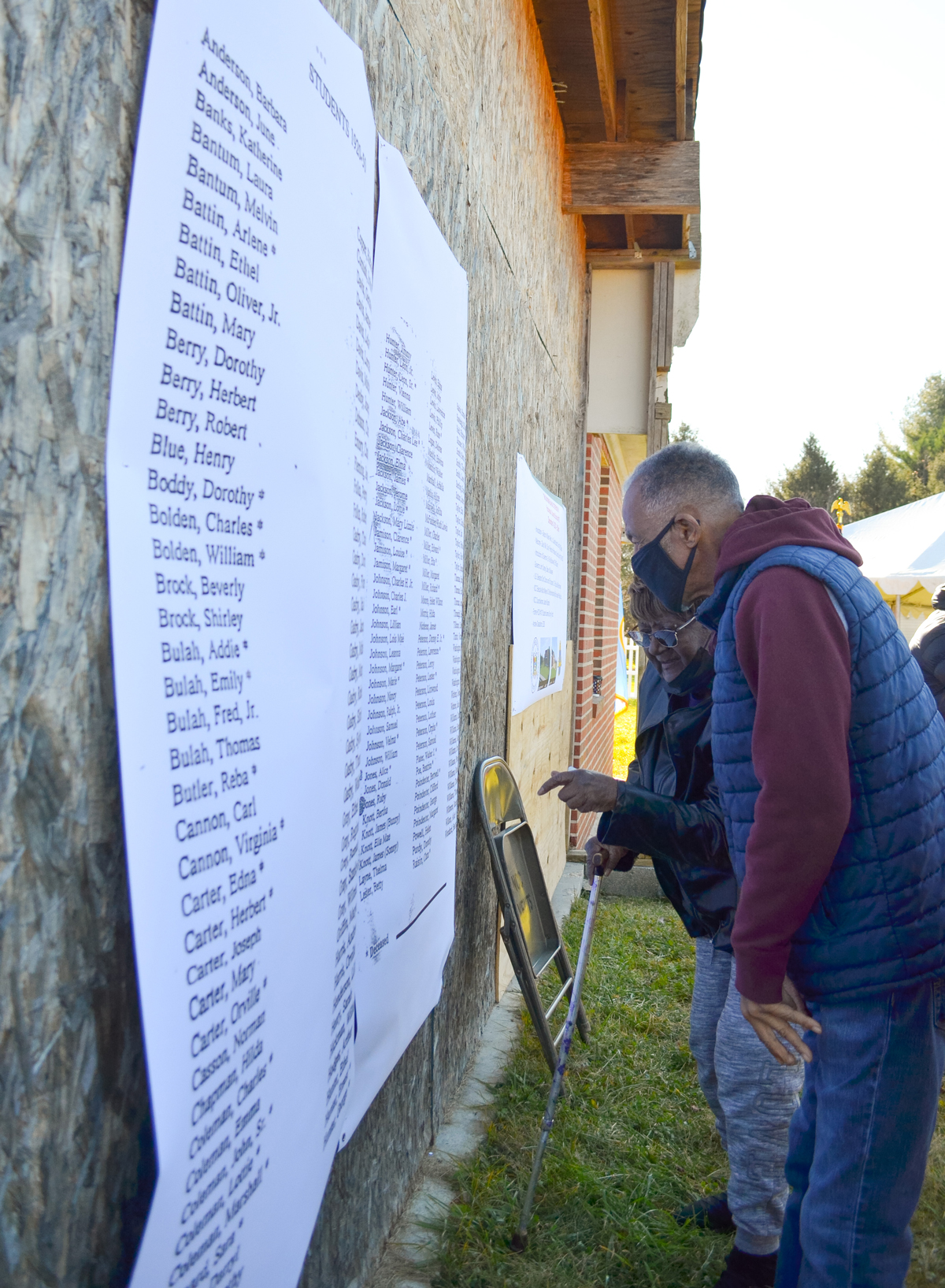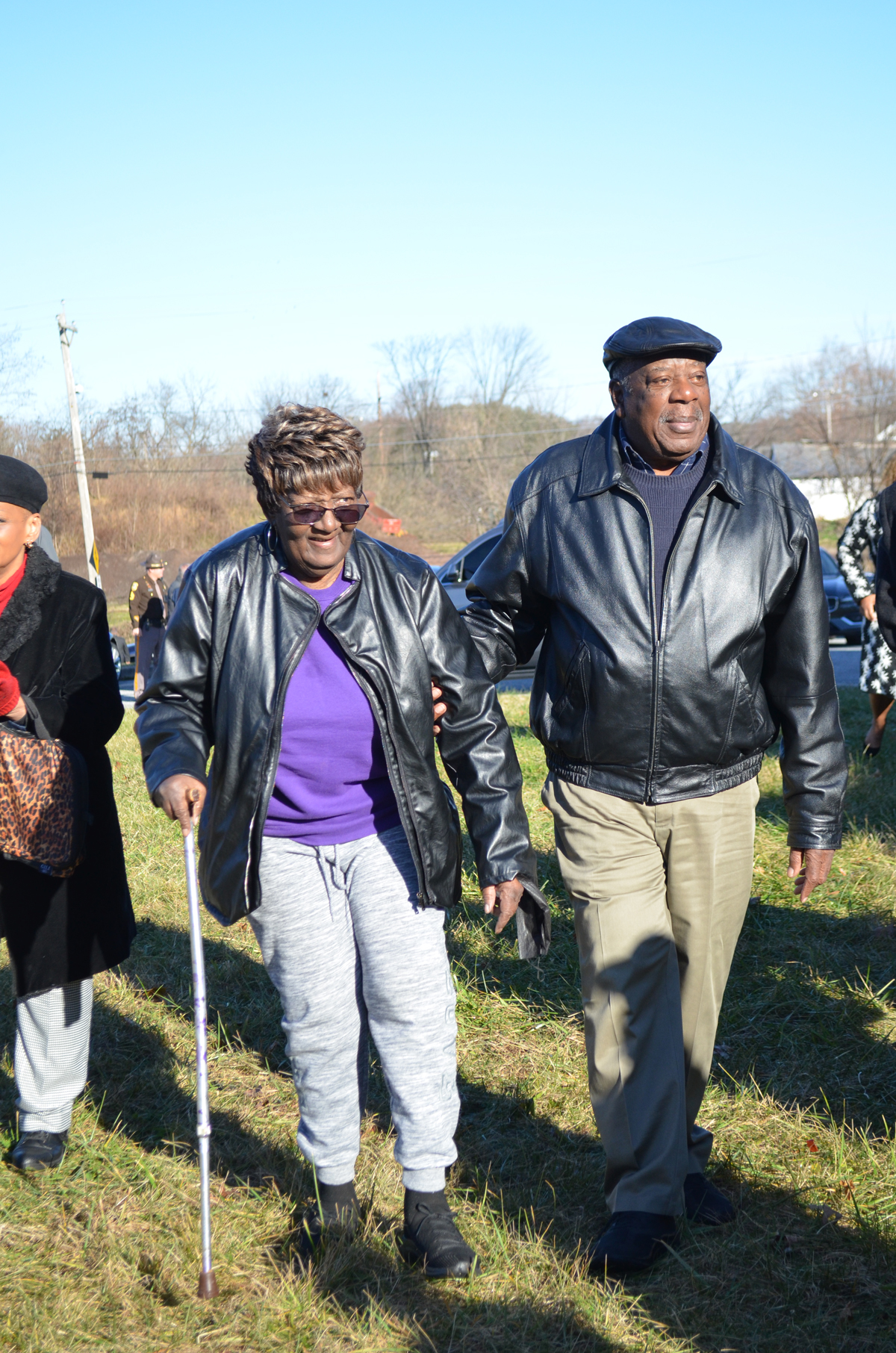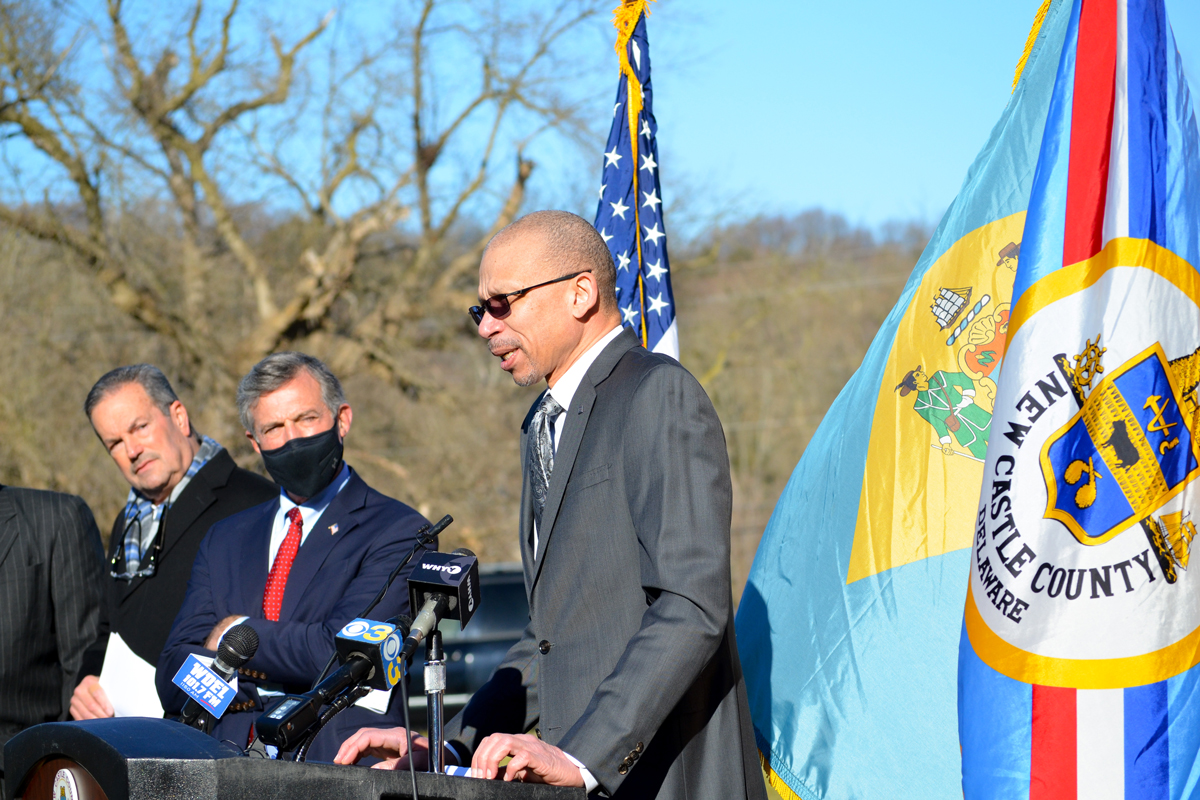Share
Photo by Rachel Swick Mavity
As the Hockessin Colored School plans to turn into a new diversity center, former Delaware students share their childhood memories.
In 1920, crews broke ground to start building the Hockessin Colored School #107C on Mill Creek Road. In 1921, students walked through the doors for the first time.
On December 14, 2021, the ground was broken again at the site. This time, construction teams, in partnership with a broad committee of politicians, county executives, community supporters, and residents aim to turn the site into a new diversity and inclusion education center.
“Many of us lived close enough. There were groups of us walking to the school each day. We have fond memories of those days of the students and the teachers,” says Lois Johnson, one of the students who attended.

Photo by Rachel Swick Mavity
Her brother-in-law Charles Johnson looks fondly at the list of names posted on the back wall of the school.
“You see these names. There were a lot of us, but so many have the same last names,” he says.
Among the list of names is Charlotte Emory. Her brother and her, Sonny Knott, both attended the school during its operation.
“I look at these names and I can picture so many of the faces,” Charlotte says softly.
Knott is known as the inspirer in chief with the Friends of Hockessin Colored School Board.
“We want to be able to explain to our grandchildren what it was like in those days. We want to teach others about segregation. I remember reading books that were used. You could look in the back of those books and see four or five names. Those were the white kids who used the books before they [would] go to us,” Sonny says.
“My grandkids don’t believe me when I tell them.”
A Center for the Future
The Center for Diversity, Inclusion & Social Equity has been in the works for the past 10 years, says David Wilk, a finance professor with Fox Business School.
The school was built by Pierre S. duPont, whose foundation has supported the Friends of Hockessin Colored School in order to get the plans and construction of the new building funded.
“How many people in their lifetimes have a chance to be a part of something where we are getting a chance to contribute to the greater good on a public scale together as brothers and sisters in this mission? We are creating greater diversity, inclusion and social equity in the future,” says Wilk.

Charlotte Emory and Sonny Knott./Photo by Rachel Swick Mavity
The center will be open to the public for cultural competency training, education events, school tours and more. It will also be a part of the federal National Parks system.
“One of the reasons this school is so important is because of the families that attended here and all that they did for the future of students like them. Students here participated in the Brown v. Board of Education case–fighting the challenges of America’s systemic segregation laws,” says Dr. Lanette Edwards, a member of the Friends board.
Dr. Edwards also helped compile a history of the school, which has been printed.
Shirley Bulah, a student at the school, was involved in the groundbreaking school desegregation case, Bulah v. Gebhart.
“This case serves as a testament to diversity, inclusion and social equity for children throughout America,” Dr. Edwards says. “If it were not for the Bulah family and this case, which was the only one accepted by the Supreme Court, we may not be here today.”
In 1951, Shirley Bulah’s parents wrote letters requesting bus transportation for their daughter so she could attend Hockessin Colored School. While a bus passed the family’s home, it was only serving white children attending Hockessin School #29. Laws were in place that would not allow buses to serve both white and black children.
Shirley’s mother, Sarah, contacted an attorney to pursue legal actions. The attorney, Louis Redding, was the first and only African American lawyer in Delaware at the time. Redding suggested petitioning not only for bus transportation but also so that Shirley could attend the closer Hockessin School #29.
In 1952, the Delaware Supreme Court consolidated the Bulah case with another case, the case of Ethel Louise Belton, whose parents had also filed on behalf of their daughter to attend a white school in Claymont.
The Court of Chancery ruled in favor of the Bulahs and Beltons and later the Delaware Supreme Court upheld the ruling, making third-grader, Shirley Bulah, the first colored student to integrate public schools and public school buses.
The Beltons followed in Claymont and the rulings allowed other black students to follow suit and attend white schools.
In 1954, Brown v. Board of Education confirmed that denying children access to schools based solely on the color of their skin was unconstitutional.
Sonny Knott speaking about his time at the Hockessin Colored School./Video by Rachel Swick Mavity
Diversity, Equity & Inclusion
“To the students who attended Hockessin Colored School: Your resilience, your stick-to-itive-ness, your love for your state and your country is an example to all of us. We can achieve whatever we want if we stick together. This is for you,” says Gov. John Carney during the December event.
“Our Delaware case was the only case affirmed by the Supreme Court during Brown v. Board of Education. So many families here, locally, had a hand in that case,” Carney says. “The future is in our power.”
EDiS Construction will be managing the construction and expects the building could be completed as early as July. The school sits on a large parcel and this project to resurrect the building and add onto it is just part of phase one, Wilk said.
In the future, they hope to do additional work on the property to make it a true learning destination for children and adults.
“We should be inspired by the work of this committee,” says Carney. “Again, as your Governor, we ought to be inspired to do more. It is our obligation to the past to better understand and reconcile the past, but our obligation and what we can do is for the future and that future is in the eyes of our children.”
“As we break this ground with the small gold-painted shovels…as we watch this expansion of our building come to reality, may we never lose sight of our mission,” says Deacon William Allen, Jr., of Canaan Baptist Church and a member of the Friends of the Hockessin Colored School Board.
“Let us promise today and every day to use these blessings in our lives to support equity, justice, peace, and compassion in our world.”

Dr. Ray Blackwell with Governor Carney and David Wilk./Photo by Rachel Swick Mavity
It is Wilk’s wish that all of Delaware knows about the Hockessin Colored School. He hopes the center will help train individuals and businesses on cultural competency and ways to have difficult conversations.
“This place is going to be a mutual place, a safe place, for community conversations. We are also going to do diversity training workshops,” Wilk said. “Here we will open a place to tackle social infrastructure issues around the country…opening up talent portals for everyone who isn’t getting access to have a runway with their talent to reach their full human potential.”
Knott says he is excited to walk through the doors of the school again because it will mean he is part of the future. Knott often speaks to local groups of students about his memories of the past.
“Teachers tell me, Mr. Knott, we’ve learned so much from you. I was there when it was going on. I didn’t get it all from a book,” Knott said. “I remember those used books when I was in school. I would be asked to read from the book, so say I am asked to read pages 3 and 4. So I say, ‘Yeah, I’m smart, I can do that.’ So, I read page 3 and then I turn to read page 4 and it isn’t there.”
He continues, “That’s why we can’t wait for this. That’s why this is so important to us. That’s why the few of us who could make it here are here,” he continues.
“When this school is refurbished and repurposed–on that day, we will be here. The most important part of this building is that door, that front door, we are going to march through on that day.”
Learn more about Hockessin Colored School and how you can participate: https://hockessincoloredschool107.org.
Related: Transform a House Into a Home With the Help of Delaware Designers



